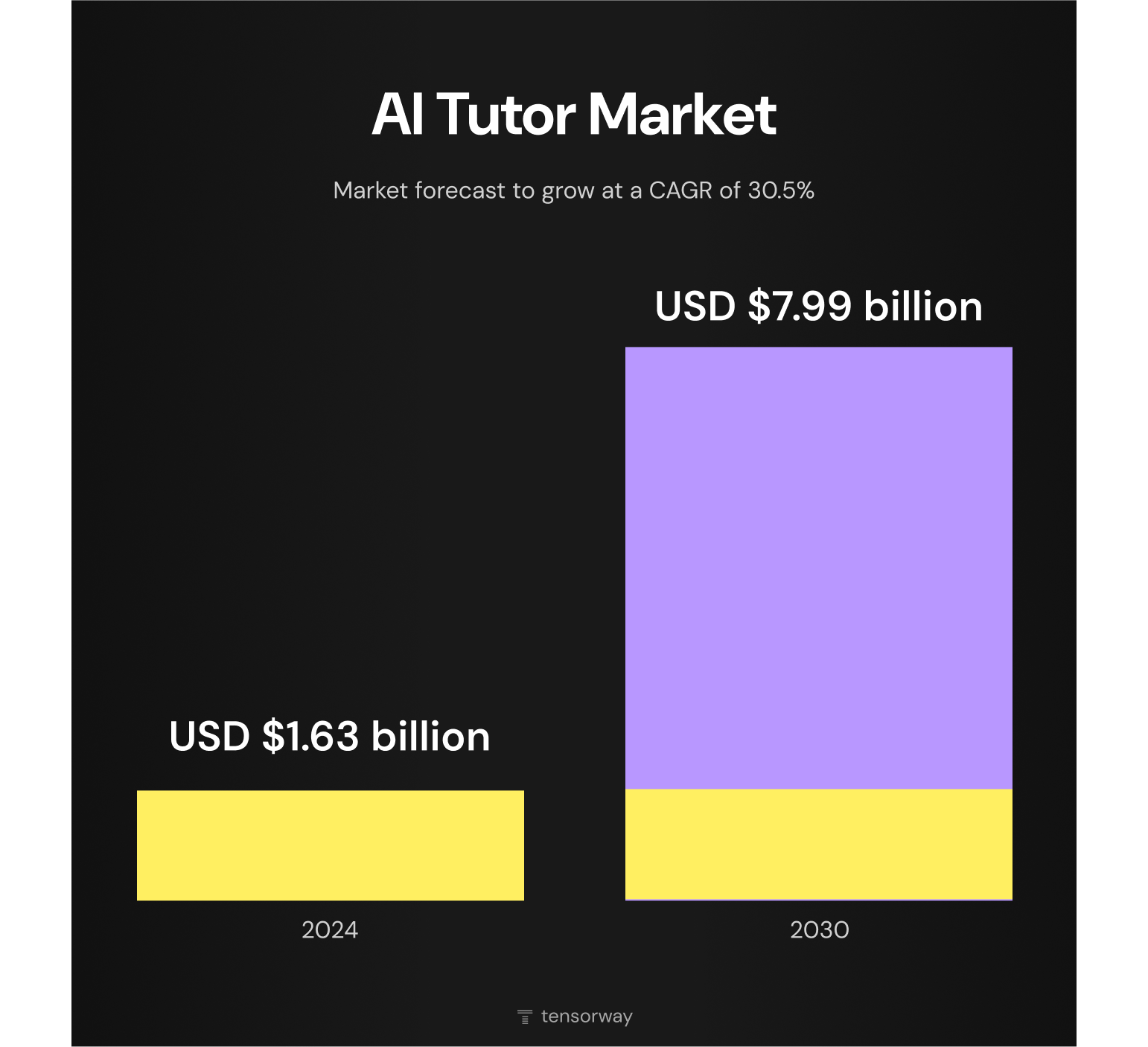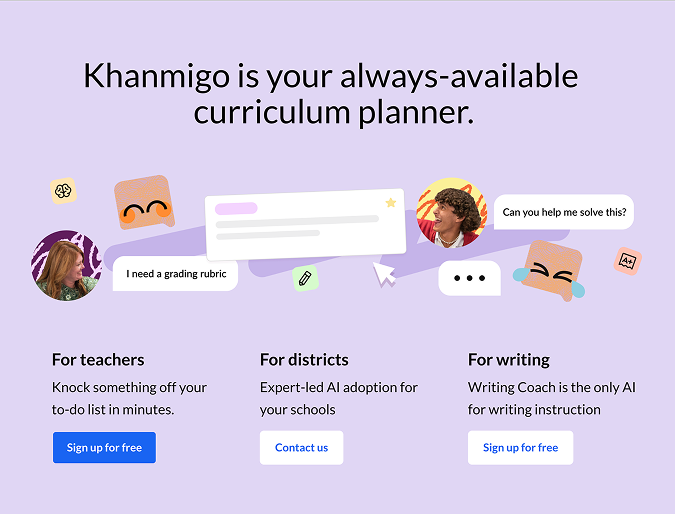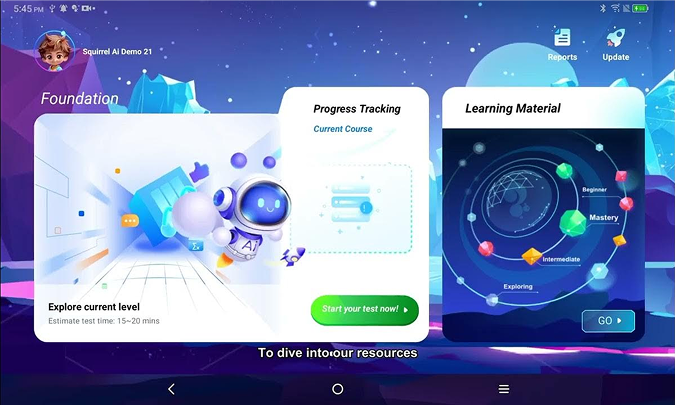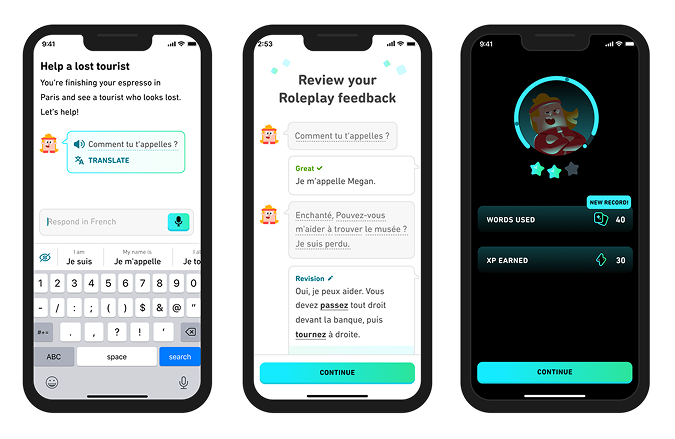The period of mass fears that AI will kill education as a concept seems to be over. Today, the common perception has changed greatly. A lot of institutions all over the world have already admitted that AI assisted programs and AI agents can significantly enhance the process of learning and increase its efficiency. According to Microsoft’s research, 47% of education leaders rely on AI in this or that form in their work every day. Almost 70% of educators have experimented with AI tools at least once. The interest in this emerging technology is greatly boosted by the growing demand for scalable personalized learning approaches.
AI tutors are among the cornerstones of this transformation in the education industry. In this article, we will talk about such solutions, highlighting their strong and weak sides, and explore whether they will replace human educators in the nearest future.
AI Tutor Market: Quick Overview
In 2024, the global AI tutor market achieved a size of $1.63 billion. Now, it is expected to grow at a CAGR of 30.5% within the period from 2025 to 2030. It means that by 2030, it will be able to hit the mark of $7.99 billion.

What Factors Boost the Market Growth
- Rising demand for personalized programs. Modern students and their parents are accustomed to personalized approaches in different areas of their lives. It’s quite natural that they have similar expectations for education. AI tutors, powered by GenAI, can definitely meet those.
- Global teacher shortage. According to a recent report by UNESCO, by 2030, the world will see a shortage of 44 million teachers. AI-powered learning tools can partially help mitigate the impact of this situation on the education space. For instance, AI can automate repetitive tasks like grading assignments or organizing learning content, or scheduling. As a result, teachers gain more time for lesson planning, mentoring, and student interaction.
- Improved AI capabilities. The emergence of advanced LLMs, like GPT-4 and Gemini, has allowed developers to make highly efficient AI tutors. Standard AI chatbots are traditionally designed for general conversation or basic information retrieval. Meanwhile, AI tutors are built to support learning by mimicking the behavior of a human tutor. They are highly context-aware. They are capable of multi-turn reasoning and are adaptive to individual learning styles.
- Corporate investment and government support. Both major players and edtech startups are working on the development of AI tutors and their integration into provided services. Apart from this, governmental strategies worldwide now embrace AI in education. For example, the European Commission, initiated an AI Continent Action Plan that nurtures AI adoption across Europe. They commenced the Innovation package to support SMEs and startups, developing AI projects, and implemented the first regulatory framework AI Act.
- Digital learning adoption. After the COVID-19 pandemic, schools widely accepted virtual tools as part of their hybrid or remote education models.
How Personalized AI Tutors Work
AI-assisted platforms used in education today are powered by a blend of advanced technologies that work together to simulate tutoring and provide personalized content. Generative AI and Large Language Models (LLMs) are at the heart of such systems.
The Role of LLMs
LLMs are trained on massive text datasets. They demonstrate good results in understanding and replicating human-like language. Given this, such models are well-suited for various tutoring scenarios.
What can LLMs do?
- Answer a wide spectrum of questions in natural language;
- Offer step-by-step explanations of different topics;
- Simulate interactive coaching;
- Summarize various materials;
- Generate questions for practice.
The image below demonstrates the impact of integrating LLMs in higher education. According to the conducted study, large language models positively influence learning efficiency and effectiveness. They are recognized as valuable tools to provide preliminary feedback and promote personalized learning.
.png)
Generative AI in Education
GenAI models can create new content, including text, based on a given prompt. They can automate repetitive and time-consuming tasks, such as lesson planning. Besides that, GenAI-powered tools offer greater visibility into student performance. They continuously analyze learning patterns and generate actionable insights.
As for different types of content, this technology is often used to create:
- Adaptive quizzes;
- Personalized learning paths;
- Visual explanations;
- Lesson summaries;
- Tutor’s feedback;
- Coding challenges or simulations, etc.
According to the Educator Confidence Report, teachers, who increased the use of GenAI by 5 times, stressed the importance of GenAI in learning materials preparation or automation of routine tasks:
.png)
However, the percentage of those educators who are still aware of GenAI and show resistance to change is way higher. Their main concern is the lack of guidance and control over AI use.
.png)
If you want to learn more about the role of generative AI in education, you can read one of our previously published articles. Just follow this link.
Natural Language Processing (NLP)
Besides text generation and responding to human language, NLP also powers such processes as:
- Sentiment analysis. NLP algorithms can detect the emotional tone behind text.
- Keyword detection. This technology makes it possible to automatically identify key terms, themes, and concepts in large volumes of text.
- Grammar and style review. Advanced tools rely on LLMs to detect grammatical errors, stylistic inconsistencies, or tone mismatches. They can also suggest clarity improvements.
- Text summarization. NLP can transform large documents into concise summaries while keeping essential meaning.
- Translation and localization. NLP powers a lot of tools like Google Translate to convert text between languages.
Machine Learning
AI tutors constantly learn from interacting with users. They can analyze user journeys, answer accurately, and reduce the time required for performing various tasks. All this allows refining future learning paths and personalizing content.
Examples of Personalized AI Tutors
The demand for personalized learning is gradually growing, as well as the number of AI-powered solutions available today. Here are a couple of products of this type.
Khan Academy’s ChatGPT Tutor Khanmigo
This AI-powered tutor was built on GPT-4 and launched in 2023 by Khan Academy. It can help users with questions in such subjects as math, science, writing, and coding. The range of available features includes a Writing Coach for essays and a teacher-focused version to support educators.

Squirrel AI
This adaptive learning system breaks courses into thousands of fine-grained knowledge points. To start their interaction with the system, students need to complete diagnostic assessments. Based on the results, the AI will customize learning paths and continually refine them based on progress. It can be used in both online and in-person learning environments.

Duolingo Max
It is an AI-enhanced tier of Duolingo. Virtual persona Lily is a part of this tier. This AI language tutor includes highly-demanded features like Explain My Answer, Roleplay conversational bots, real-time practice sessions, and video calls with Lily.

Rori by Rising Academies
It is an AI-powered virtual math tutor targeted mainly at students from different African regions. Students can interact with Rori even on ultra low-cost devices absolutely for free. The interaction takes place in natural language via the WhatsApp chat.
.png)
AI-Powered GAMSAT Examination Tutor by Tensorway
While some AI systems are designed for a broad audience with different needs, others are more specialized. A good example of a solution from the second category is a GAMSAT tutor developed by our team. This advanced platform can provide automated, tutor-like feedback on GAMSAT essays.
The system was trained on hundreds of real student submissions and expert annotations and can perform in-depth analysis of texts. It evaluates overall quality, structure, clarity, also the strength of a quote interpretation. Based on such analysis, it generates nuanced feedback to help students refine their writing.
Benefits of AI in Education
To better understand the value of AI assisted learning solutions, let’s consider their perks for students and educators.
For Students
.png)
- Personalized learning journeys. Artificial intelligence can efficiently adapt lessons to each student’s strengths, weaknesses, needs, and skills. Thanks to this, the efficiency of all learning efforts can be significantly higher.
- Instant feedback. Waiting for teachers’ feedback for hours (or even days) can be really annoying. With a personalized AI tutor, students can receive answers immediately. Real-time hints and guidance help them better learn from mistakes and avoid confusion caused by delayed feedback.
- 24/7 accessibility. Unlike human teachers, AI tutors are available at any time. This makes learning more flexible.
- Interactivity and increased engagement. AI-powered systems typically offer various gamified elements, quizzes, and multimedia content. All this can keep learners motivated and make education more interesting and enjoyable.
- More confidence in practice. Some students are embarrassed to ask questions to a teacher in front of the class. The use of AI systems can solve this problem. In their interaction with an AI tutor, students can feel more relaxed and actively participate in the learning process.
Advantages of Using AI in Education for Teachers
.png)
- Efficient automation and time saving. AI can perform repetitive tasks like grading quizzes, generating reports, and tracking student progress. With such functionality, teachers can have more free time for lesson planning and interaction with students. It’s interesting that more than 40% of educators who use AI name time saving as the biggest benefit of this technology.
- Data-driven insights. AI systems can provide real-time analytics on student performance. With such insights at hand, teachers can more quickly identify learning gaps and find better targeted approaches to address them.
- Professional growth. Modern AI tools can be helpful for lesson improvement, collaborative planning, and professional development. Apart from this, AI systems can provide teaching materials and content enhancements based on the specific class needs.
- Improved classroom management. Teachers can use advanced AI tools to manage individual learning paths of students. At the same time, they can concentrate on fostering a positive, inclusive classroom environment.
- Real-time translation and multi-language support. AI can help bridge communication gaps in multilingual classrooms with instant translation and content delivery.
Limitations of Using Personalized AI Tutors
Though the benefits of AI in education are undeniable, the novelty of agentic AI and the lack of control of LLMs often lead to some pitfalls. Let’s review the most pressing concerns and limitations of personalized AI tutors.
.png)
Lack of Emotional Intelligence and Motivation Support
A good ChatGPT tutor (or any other solution powered by another LLM) can provide feedback and track performance. It can even mimic natural conversation. But it lacks genuine emotional awareness. Modern AI tools can’t understand emotions, like frustration or anxiety. Due to this, they can’t offer the specific emotional support that learners may need.
Lack of Abstract Reasoning and Creativity
AI systems are trained on data and logic-based patterns. Thanks to this, they are exceptionally good at structured tasks. However, when it comes to original thinking, imaginative discussions, or open-ended problem-solving, they usually fall short.
Yes, today, AI agents are increasingly capable of exhibiting a form of abstract reasoning. However, this ability remains limited if compared with how humans can do it. AI models struggle when they are faced with altered scenarios or novel domains that they haven’t encountered in training. Their reasoning is usually based on statistical correlation, instead of true conceptual understanding.
Data Bias and Accuracy Issues
“Garbage in, garbage out” is a key principle AI models work on. They fully reflect the data they were trained on. If the input data includes biases, the AI may unintentionally reinforce them in its responses.
Apart from this, there is a risk that an AI tutor will misinterpret a student’s skill level or learning pattern due to insufficient or inaccurate data. This situation may become aggravating for both students and educators.
Privacy Concerns
Personalized learning tools typically need to collect and process large volumes of behavioral data, including students’ habits, performance trends, etc. The use of this data plays a crucial role in delivering tailored content. But it also raises serious data safety and security concerns due to a lack of regulations for this rising and still developing technology. The worst-case scenario could be unauthorized data sharing with third parties or even leaks of sensitive personal data.
Significant Tech Dependency
The use of AI tools in the learning process requires access to particular technology and devices. However, not all students have equal access to them. Students from low-income and remote regions often do not have high-speed internet and up-to-date devices. Moreover, their digital literacy skills are not always sufficient for using an AI language tutor.
Lack of Accountability and Oversight
AI tutors aren’t responsible for the results of their work in a traditional sense. If such a tool provides incorrect advice or fails to help a student, it will not be accountable for such actions, and human educators will take the blame anyway. Errors can easily go unnoticed, while students do not always know how to check AI-generated decisions.
Low Support for Collaborative Learning
AI-powered solutions typically operate in a one-to-one learning context. They do not naturally promote group discussions or any collaborative projects. Nevertheless, such formats are essential for developing communication, leadership, and teamwork skills.
One-Size-Fits-All Approaches
AI systems are typically positioned as personalized. And that’s true. But many existing tools of this type apply generalization algorithms. Many of such algorithms have limited capabilities in learning styles, like auditory, visual, or others. As a rule, they focus on only one major approach to learning. True personalization requires more than adaptive content, but also learners’ preferences and behavior.
High Development and Maintenance Costs
The creation, implementation, ongoing training, testing, and post-launch support of truly effective AI tutors are pretty resource-intensive tasks. Educational institutions need significant investment in such projects. As a result, small schools or educational institutions in low-income regions will not be able to introduce such systems.
The Right Balance between AI Power and Human Engagement
All the limitations of AI learning prove the idea of the right balance between the use of technology and human participation in education. Artificial intelligence should augment and empower, but not replace human guidance.
In educational systems, personalized AI tutors should be placed as assistants to enhance traditional teaching methods. They can be highly helpful for automating routine tasks and providing tailored learning experiences.
At the same time, human educators should remain central to mentorship, creativity, and emotional support, testing proven AI tools.
The future of education lies in a hybrid model, where teachers and AI tools will work in tandem to deliver the best results.
At Tensorway, we have solid expertise in building custom AI-powered solutions for learning. We deeply understand the peculiarities of this domain and know how to address the existing issues with the power of emerging technologies. Share your ideas with us, and we will offer the best approach to transforming them into a real, highly efficient product.


.jpg)
